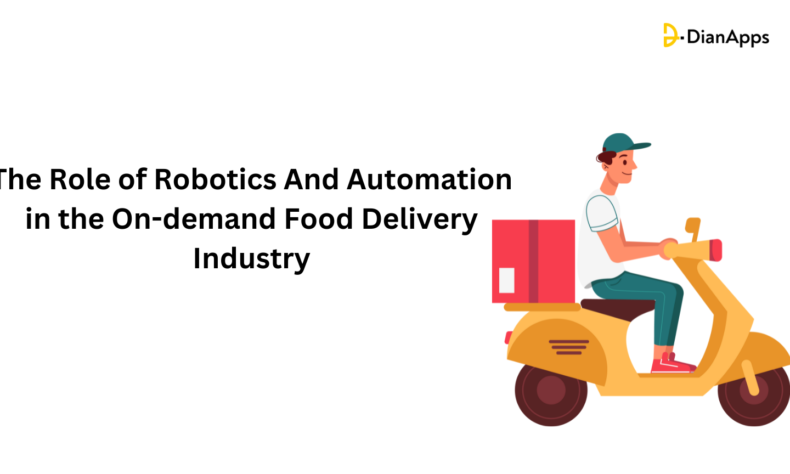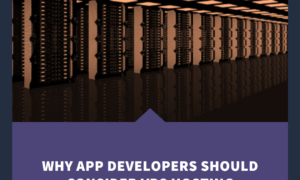
The way world eats is now transforming into a dramatic shift. Once limited to pizza and Chinese food, food delivery now spans a global market valued at over USD 254.52 billion in 2022, expected to grow at a CAGR of 10.3% from 2023 to 2030.
Today’s reality is beyond our wildest dreams – Food Delivery Robots and Automated Systems. Innovations like real-time order tracking and contactless delivery have transformed the industry.
Advanced technologies now allow real-time order tracking, and contactless delivery emerged during the pandemic, minimizing customer-driver interactions.
As food delivery demands soar, robots come to the rescue. Companies have introduced compact robots adept at distributing food.
This blog delves into the impact of these robots on food delivery app development, revealing fascinating industry insights and their transformative potential.
The idea behind Robotics and Automatic Food Delivery
Instead of relying on human delivery drivers, these ingenious robots take charge. With their ability to navigate through various terrains, from rain to snow and even curbs and crosswalks, they ensure a seamless delivery experience.
Operating at a maximum speed of about four miles per hour, these robots can be easily tracked through a dedicated mobile application. Some robots are even designed to move efficiently within buildings, utilizing hallways and elevators for swift deliveries. Several food automation companies have embraced this technology to deliver orders autonomously.
For instance, Kroger, a leading grocery store chain, uses robots to deliver goods to customers’ doors. Their automated system swiftly retrieves products like bananas, eggs, and cheese to expedite grocery orders.
While drone-based food delivery options are being explored in the food industry, the primary focus lies on meeting consumers’ need for faster deliveries. The pandemic has further escalated the demand for contactless services, on-demand delivery apps leading to labor shortages. In this context, food delivery robots have emerged as a viable solution, easing concerns about virus transmission and becoming the preferred choice for future deliveries.
Taking advantage of automation in the food delivery process will undoubtedly have a significant impact, paving the way for a seamless and efficient future.
Demand For Food Delivery Robots
The demand for food delivery robots is on the rise, captivating the interest of consumers globally.
- A 2019 report from The National Restaurant Association and Technomic revealed that four out of ten consumers expressed a willingness to use robotic delivery services if available.
- During the pandemic, the demand for delivery services surged, with six in ten adults stating a higher likelihood of opting for food delivery compared to before the pandemic, as reported in the State of the Restaurant Industry report.
- The delivery robot market share in the retail segment is expected to exceed US$ 1 billion by 2032.
- Revenue projections for the Food Industry Robotics market indicate it reaching US$ 0.41 billion by 2023.
- The eServices Online Food Delivery segment’s Platform-to-Consumer Delivery worldwide is forecasted to reach US$ 96,864.4 million in 2024.
- The online meal delivery segment in the United States experienced substantial growth, with the number of users doubling between 2017 and 2022, surpassing 161 million people in 2022 from an estimated 81 million in 2017.
- This trend highlights the increasing reliance on food delivery services, making food delivery robots a promising and sought-after innovation in the industry.
- The market of on-demand food delivery app development is expected to expand to $55,828.1 million by 2032.
What are the benefits of delivery robots?
1. Speed
On-demand meal delivery services typically take roughly 30 minutes to complete an order. The delivery process is improved through real-time tracking, route optimization, task automation, scheduling, and delivery management modules. Clients also have the option of placing an order with a single swipe. Both customers and business owners will find the entire meal delivery process to be convenient.
2. Affordability
Clients prefer to order food from on-demand food delivery services to save money and time on transportation. However, if you run a restaurant and are looking for ways to promote it, internet delivery may be the ideal option for you.
The food delivery app also requires tipping the driver who delivered your food. Automated robots will cost a monthly subscription of around $10, making it the cheapest delivery option if you consider a country like the United States.
3. Food safety
A robot’s food compartments are created in such a way that no one can touch what’s inside. They are also outfitted with an alarm that goes off if someone tries to take the food or even the robot. When the robot arrives at the location, the restaurant sends the customer a link or maybe a passcode, which the recipient clicks/enters to unlock the meal.
4. Order tracking
The automated food delivery system or robots are equipped with a tracking device, allowing you to know where your food delivery robot is at all moment and how quickly the food will be delivered. There is no need to worry about robots becoming lost or stolen because the company can simply locate them using trackers.
5. Reduction of pollution
With more robotic systems on the road, there are far greater chances of fewer delivery vehicles on the road are jammed with mostly people who are delivering the orders. They will have a positive effect in controlling the level of pollution in big cities and helps reduces greenhouse gas emissions.
6. Personal human interaction
If you’ve ever encountered with a Robot, you might have noticed that there are microphones inserted into them. This microphone helps a robot to communicate with restaurant workers, pedestrians, or customers. This vastly improves customer experience and food delivery services.
How On-demand Food Delivery Apps and Services are Transforming he Society?
1. The development of AI and ML
Artificial intelligence and machine learning technologies are being used in the on-demand food delivery industry to optimize many parts of the delivery process. For example, AI-powered route optimization algorithms are used to discover the most effective delivery routes, lowering delivery time and enhancing overall customer experience.
Machine learning algorithms are also used to analyze user data and make tailored recommendations, such as recommending restaurants and cuisines based on our likes. And arranging history. Furthermore, AI-powered demand forecasting assists restaurants in better managing inventory and reducing food waste. The integration of AI and ML in food delivery app development services is projected to rise in the next years, offering users with more advanced and tailored experiences.
2. Auto Kitchen Operations and Processes
Before the lockdown, many restaurants used to break sanitization standards by allowing crowds of people in the kitchen. No room to swing a cat, and the need for social distancing has changed it all. The health of both company employees and clients matters, so the on-demand delivery companies must ensure safe working environments.
Here is when the point-of-sale (POS) system comes to the rescue as a promising solution. It allows communicating with kitchen display systems to auto-show orders. This system prevents the front of the house from entering the cooking area to take away prepared meals.
Another modernized option is using cooking robots/machines instead of human beings. On one hand, it increases unemployment rates, but, at an age when safety matters more than anything else, it is a brilliant idea. For example, robots serve food in places like Spyce (a great example of automated restaurants, agree). Most of them are available in Asia, but the trend is expanding fast everywhere. Some of these places combine robot labor with human labor.
3. Contactless ordering, restaurant payment systems, and pickup technology
Even before Covid-19, businesses were moving towards contactless payment as the mobile app development market was booming. You must have noticed that fine dining in restaurants has shrinked and online orders are soaring high. This trend in on-demand delivery business will remain in 2023.
In 2020, most restaurants used third-party providers to deliver orders to their clients. In 2023, more and more cafes switch to in-house delivery by hiring corresponding staff full-time. Except for the reduced costs, this business strategy allows for greater visibility and control over the stock levels.
Restaurants should be ready that customers are more worried about the ingredients and the way everything is cooked when they choose on-demand app development services. They care more about hygiene and quality of products that operators deliver.
Anyway, third-party on-demand meal providers remain at the top. The most successful examples of such applications include Deliveroo, Uber Eats, and Just Eat. Their advantage is the delivery speed. Thus, restaurants will face four challenges: native on-demand delivery software development, recruitment, extra sanitization measures, and transportation.
4. Technology that reduces waste
This tendency is not new. It has started with the growing popularity of our planet going green. Eco movement reps were the first ones who suggested this approach.
One way to minimize waste for an on-demand delivery platform is by automating inventory management procedures. Two other benefits include a decrease in expenses and a revenue boost. These processes almost exclude any severe errors and accidents.
Some instruments show which product stock is running low, considering the delivery times in their estimations. Restaurants see what they lack and order necessary goods ahead. Winnow and LeanPath are just a couple of examples of effective food-waste-prevention systems.
5. Smartphone bill splitting and payment software
As our world is going cashless, this trend is hot. Imagine five people, each wishing to pay for their order separately. It’s a headache for both customers and the restaurant. An effective way is installing special mobile software that makes viewing, splitting, paying, and tracking orders simple. Such apps reduce both time and effort by excluding errors in estimates. Divvy, Billr, and Venmo are some well-known examples of this category of applications.
Every client would be happy to obtain more independence. They will stay assured that no one has tricked them as they can access all orders via these apps.
If you have no desire to come up with your native application for clients, recruit known providers that will help you sell goods and services. The main pitfall is that it will be the provider’s client base instead of yours. As a result, you may risk losing some customers. What’s more, the cost of collaboration will vary for various vendors.
A great idea is hiring software development company that will create an app for your business from scratch. You’ll get full control over all operations without fearing that some data can be stolen.
Final Words
Robots for food delivery represent a major shift in the industry, and businesses that adopt this technology are poised to stay ahead of the curve. While there are a few challenges such as regulatory issues and technology limitations, food delivery robots look like a promising technology and can transform the food delivery industry in coming years.
What do you think about food delivery robots?
Also, don’t forget to get in touch with an on-demand app development company if you’re looking to get your food delivery app developed.





